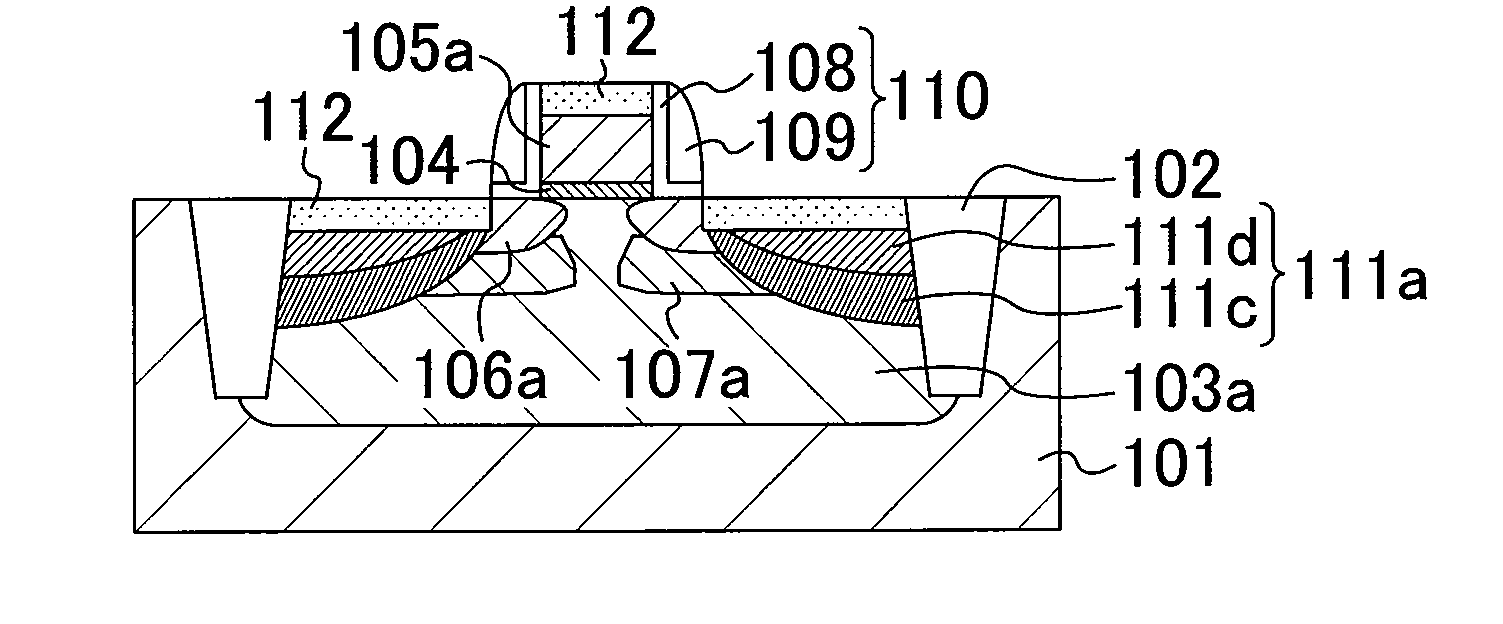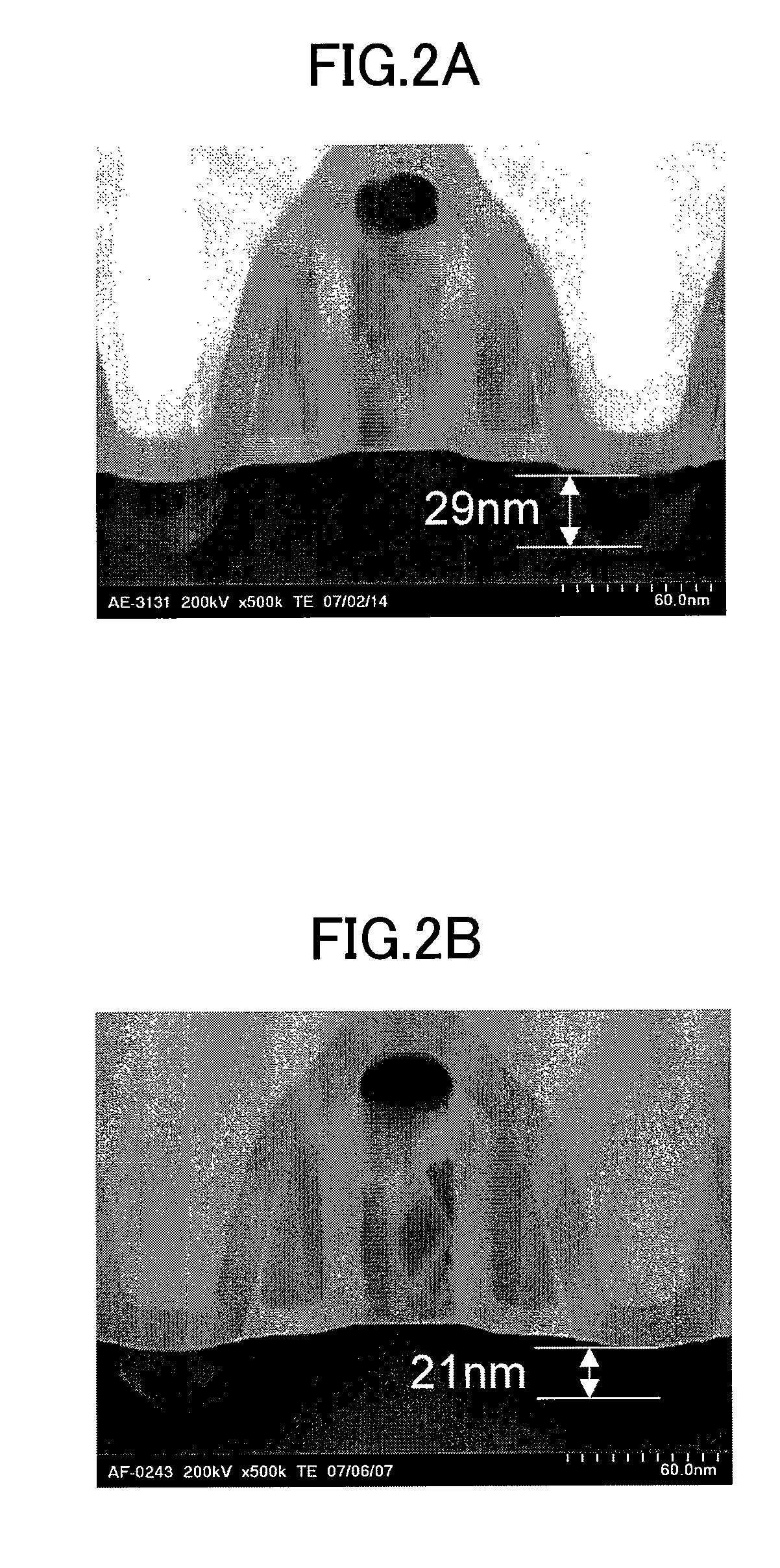Fabrication method of semiconductor device
a technology of semiconductor devices and fabrication methods, which is applied in the direction of semiconductor devices, electrical equipment, transistors, etc., can solve the problems of difficult to increase the depth of a source/drain of a microfabricated transistor, no improvement in the junction leakage current, and no effect in the nickel silicide formation process, so as to reduce the thickness of the nickel silicide film, suppress the junction leakage current, and speed up the diffusion speed of metal diffusion in the source/drain region.
- Summary
- Abstract
- Description
- Claims
- Application Information
AI Technical Summary
Benefits of technology
Problems solved by technology
Method used
Image
Examples
embodiment
[0023]An example of a semiconductor device fabrication method of the present invention is hereinafter described, with reference to the drawings. Although a P channel type MIS transistor and an N channel type MIS transistor are formed alternately in the transistor fabrication process, descriptions of a fabrication process of an N channel type MIS transistor is omitted here because the present invention relates to a fabrication method of a P channel type MIS transistor.
[0024]FIG. 1A to FIG. 1E are cross sections showing a fabrication method of a semiconductor device according to the first embodiment of the present invention. This semiconductor device includes a P channel type MOS transistor on an N type well 103a.
[0025]First, as shown in FIG. 1A, an isolation region 102 composed of a buried insulating film or the like is formed in a semiconductor substrate 101 of silicon or the like. After that, the N type well 103a is formed by photolithography and ion implantation.
[0026]Then, as sh...
PUM
 Login to View More
Login to View More Abstract
Description
Claims
Application Information
 Login to View More
Login to View More - R&D
- Intellectual Property
- Life Sciences
- Materials
- Tech Scout
- Unparalleled Data Quality
- Higher Quality Content
- 60% Fewer Hallucinations
Browse by: Latest US Patents, China's latest patents, Technical Efficacy Thesaurus, Application Domain, Technology Topic, Popular Technical Reports.
© 2025 PatSnap. All rights reserved.Legal|Privacy policy|Modern Slavery Act Transparency Statement|Sitemap|About US| Contact US: help@patsnap.com



